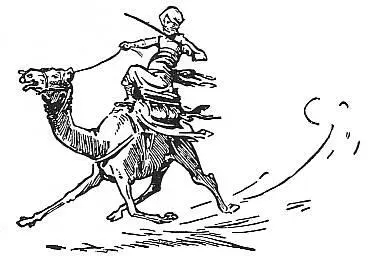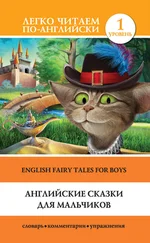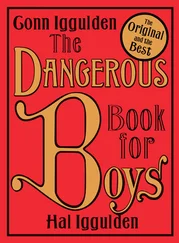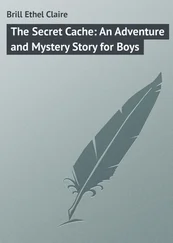Robert Robert - Scouting for Boys
Здесь есть возможность читать онлайн «Robert Robert - Scouting for Boys» весь текст электронной книги совершенно бесплатно (целиком полную версию без сокращений). В некоторых случаях можно слушать аудио, скачать через торрент в формате fb2 и присутствует краткое содержание. Жанр: Старинная литература, und. Описание произведения, (предисловие) а так же отзывы посетителей доступны на портале библиотеки ЛибКат.
- Название:Scouting for Boys
- Автор:
- Жанр:
- Год:неизвестен
- ISBN:нет данных
- Рейтинг книги:3 / 5. Голосов: 1
-
Избранное:Добавить в избранное
- Отзывы:
-
Ваша оценка:
- 60
- 1
- 2
- 3
- 4
- 5
Scouting for Boys: краткое содержание, описание и аннотация
Предлагаем к чтению аннотацию, описание, краткое содержание или предисловие (зависит от того, что написал сам автор книги «Scouting for Boys»). Если вы не нашли необходимую информацию о книге — напишите в комментариях, мы постараемся отыскать её.
Scouting for Boys — читать онлайн бесплатно полную книгу (весь текст) целиком
Ниже представлен текст книги, разбитый по страницам. Система сохранения места последней прочитанной страницы, позволяет с удобством читать онлайн бесплатно книгу «Scouting for Boys», без необходимости каждый раз заново искать на чём Вы остановились. Поставьте закладку, и сможете в любой момент перейти на страницу, на которой закончили чтение.
Интервал:
Закладка:
Dust out of pockets, or in the recesses of a pocket-knife, and so on, tells a great deal, if closely examined.
Sherlock Holmesism
Dr. Bell of Edinburgh is said to be the original from whom Sir Conan Doyle drew his idea of Sherlock Holmes.
The doctor was once teaching a class of medical students at a hospital how to treat people. A patient was brought in, so that the doctor might show how an injured man should be cared for. The patient in this case came limping in, and the doctor turned to one of the students and asked him:
“What is the matter with this man?”
The student replied, “I don’t know, sir. I haven’t asked him.”
The doctor said: “Well, there is no need to ask him, you should see for yourself—he has injured his right knee—he is limping on that leg. He injured it by burning it in the fire— you see how his trouser is burnt away at the knee. This is Monday morning. Yesterday was fine, Saturday was wet and muddy. The man’s trousers are muddy all over. He had a fall in the mud on Saturday night.”
Then he turned to the man and said: “You drew your wages on Saturday and got drunk, and in trying to get your clothes dry by the fire when you got home, you fell on the fire and burnt your knee—isn’t that so?”
“Yes, sir,” replied the man.
I saw a case in the paper once where a judge at the county court used his powers of “noticing little things,” and “putting this and that together.” He was trying a man as a debtor.
The man pleaded that he was out of work, and could get no employment.
The judge said: “Then what are you doing with that pencil behind you ear if you are not in business?”
The man had to admit that he had been helping his wife in her business, which, it turned out, was a very profitable one. The judge thereupon ordered him to pay his debt.
True Scouting Stories
Captain Stigand in Scouting and Reconnaissance in Savage Countries gives the following instances of scouts reading important meanings from small signs.
When he was going round outside his camp one morning, he noticed fresh spoor of a horse which had been walking. He knew that all his horses went at a jog-trot only, so it must have been a stranger’s horse. He realized that a mounted enemy scout had been quietly looking at his camp in the night.
Coming to a village in Central Africa from which the inhabitants had fled, Stigand could not tell what tribe it belonged to till he found a crocodile’s foot in one of the huts. This showed that the village belonged to the Awisa tribe, as they eat crocodiles, and the neighbouring tribes do not.
A man was seen riding a camel over half a mile away.
A native who was watching him said, “It is a man of slave blood.” “How can you tell at this distance?” “Because he is swinging his leg. A true Arab rides with his Legs close to the camel’s side.”
Finding Lost Property

The footmarks of different camels look very much alike. But Egyptian trackers are trained to follow them and track down stolen camels.
An officer lost his field-glasses during some manoeuvres on the desert five miles from Cairo, and he sent for native trackers to look for them.
The horse was brought out and led about, so that the trackers could study its footprints. These they carried in their minds, and went out to where the manoeuvres had been. There, among the hundreds of hoof marks of the cavalry and artillery, the trackers soon found those of the officer’s horse, and followed them up wherever he had ridden, till they found the field-glasses lying where they had dropped out of their case on the desert.
The “Lost” Camel
Egyptian trackers are particularly good at spooring camels. To anyone not accustomed to them, the footmarks of one camel look very like those of any other camel. But to a trained eye they are all as different as people’s faces, and the native trackers remember them very much as you would remember the faces of people you have seen.

The tracks right outside your door may have a stor y to tell if you can read them. These tracks are from a si mple story of a dog chasing a cat, and its owner’s anger.
Some years ago a camel was stolen near Cairo. The police tracker was sent for and shown its spoor. He followed it for a long way until it got into some streets, where it was entirely lost among other footmarks.
A year later the same police tracker suddenly came on the fresh track of this camel—he had remembered its appearance all that time. It had evidently been driven with another camel whose track he also recognized. He knew they were made by a camel which belonged to a well-known camel thief. So, without trying to follow the tracks through the city, the tracker went with a policeman straight to the man’s stable, and there found the long-missing camel.
South American Trackers
The “Gauchos,” or native cowboys, of South America are fine scouts. The cattle lands are now for the most part enclosed. but formerly the gauchos had to track stolen and lost beasts for miles and were therefore good trackers. One of these men was once sent to track a stolen horse, but failed to find it. Then months later, in a different part of the country, he suddenly noticed the fresh spoor of this horse on the ground. He at once followed it up and recovered the horse.
Example of Practice in Deduction
A simple deduction from signs noticed in my walk one morning on a stormy mountain path in Kashmir.
Signs Observed—Tree-stump, about three feet high, by the path. A stone about the size of a cocoanut lying near it, to which were sticking some bits of bruised walnut rind, dried up. Some walnut rind also lying on the stump. Farther along the path, thirty yards to the south of the stump, were lying bits of walnut shell of four walnuts. Close by was a high sloping rock, alongside the path. The only walnut tree in sight was 150 yards north of the stump.
At the foot of the stump was a cake of hardened mud which showed the impression of a grass shoe. What would you make out from those signs? My solution of it was this:
A man had gone southward on a long journey along the path two days ago carrying a load and had rested at the rock while he ate walnuts. My deductions were these:
It was a man carrying a load, because carriers when they want to rest do not sit down, but rest their load against a sloping rock and lean back. Had he had no load, he would probably have sat down on the stump, but he preferred to go thirty yards farther to where the rock was. Women do not carry loads there, so it was a man. He broke the shells of his walnuts on the tree-stump with the stone, having brought them from the tree 150 yards north—so he was travelling south. He was on a long journey, as he was wearing shoes, and not going barefooted, as he would be if only strolling near his home. Three days ago there was rain, the cake of mud had been picked up while the ground was still wet—but it had not been since rained upon, and was now dry. The walnut rind was also dry, and confirmed the time that had elapsed.
There is no important story attached to this, but it is just an example of everyday practice which should be carried out by Scouts.
PATROL PRACTICES IN DEDUCTION
Read aloud a story in which a good amount of observation of details occurs, with consequent deductions, such as in either the Memoirs or the Adventures of Sherlock Holmes. Then question the boys as to which details suggested certain solutions, to see that they really have grasped the method.
Читать дальшеИнтервал:
Закладка:
Похожие книги на «Scouting for Boys»
Представляем Вашему вниманию похожие книги на «Scouting for Boys» списком для выбора. Мы отобрали схожую по названию и смыслу литературу в надежде предоставить читателям больше вариантов отыскать новые, интересные, ещё непрочитанные произведения.
Обсуждение, отзывы о книге «Scouting for Boys» и просто собственные мнения читателей. Оставьте ваши комментарии, напишите, что Вы думаете о произведении, его смысле или главных героях. Укажите что конкретно понравилось, а что нет, и почему Вы так считаете.

![Роберт Баден-Пауэлл - Искусство скаута-разведчика[Scouting for boys ; Искусство Разведки для мальчиков]](/books/70572/robert-baden-pauell-iskusstvo-skauta-thumb.webp)









